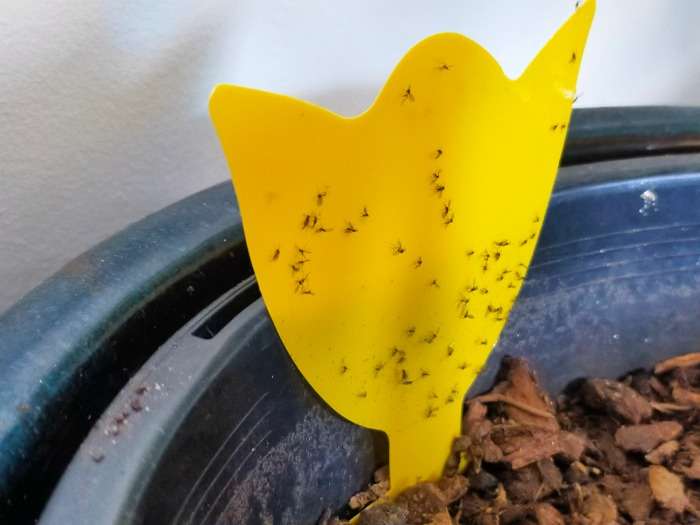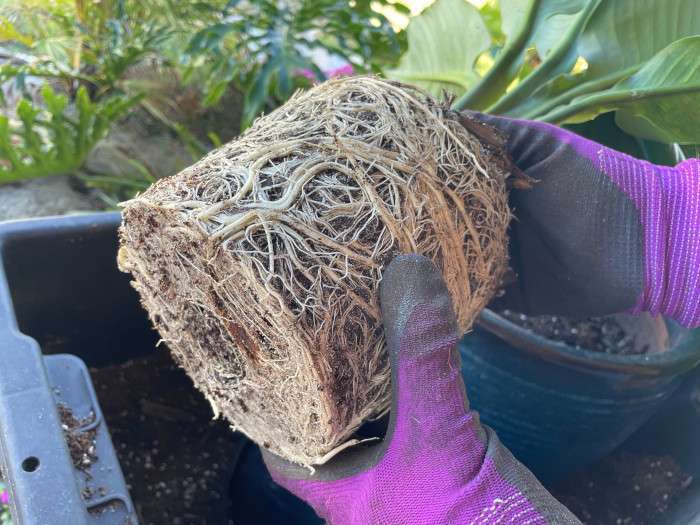Monstera Deliciosa, also known as the Swiss Cheese Plant, is a classic indoor houseplant celebrated for its large, distinctive leaves adorned with unique holes and textures. Its low-maintenance nature and striking appearance make it a favourite among plant lovers, including myself.
Many people find propagation challenging or are unsure how to do it. However, I’ve successfully propagated numerous Monsteras over the years, both indoors and outdoors. In this guide, I’ll share the best method I’ve experienced for propagating Monsteras, along with essential tips to help ensure your success.
How to Propagate Monstera in Water
Propagating cuttings in water is probably the easiest, no-fuss method. I’ve experimented with planting cuttings in soil, and while it can work fine, I find it’s more effort to keep the soil consistently moist. In my hot, dry climate, cuttings in soil are particularly vulnerable to drying out if I forget to check on them for just a day or two.
With water propagation, you simply pop the cuttings into a clear vase and let nature take its course. Basically set and forget.
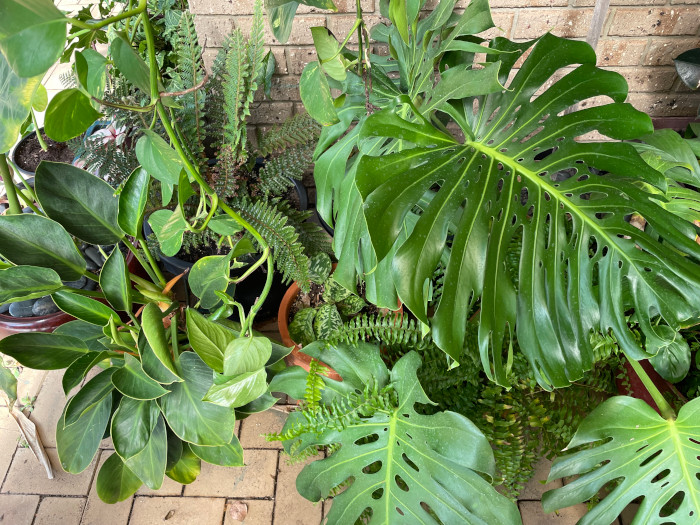
Materials Needed
- Knife/Pruner – Whenever cutting plants, using blades sterilized with alcohol is good practice to avoid spreading disease.
- Vase – A see-through vase is ideal so you can monitor the roots for disease and growth.
- Rooting Hormone(optional) – The base of the stem can be dipped in rooting hormone to increase the chances of roots growing but either method will work without it.
Step 1: Take a Cutting
Before taking a cutting, ensure the mother plant is healthy and free of any diseases. Cut either above or below a node on the plant. Nodes are distinctive sections with clear lines and often aerial roots. Older nodes might lack leaves, making buds hard to identify. Buds are small oval shapes on the node where a new leaf will grow; however, they can sometimes be hidden or difficult to see.

The best node for taking a cutting will have a leaf as well as a visible bud. If you take a cutting from an older node without leaves, it may still grow roots, but it won’t produce new leaves unless there is a viable bud present. The bud is essential for new leaf growth. Without a bud, the cutting won’t grow new leaves.

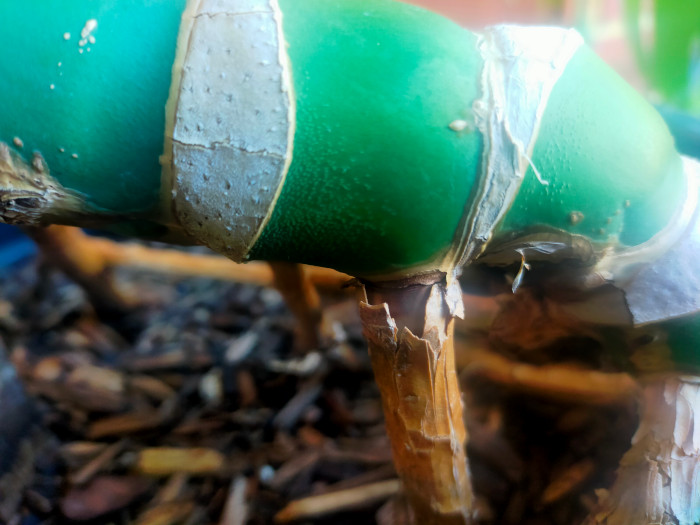
Step 2: Prepare Cutting
Take your cutting and let it sit for around 10 minutes while the cut wound scabs over and dries. This will help prevent the stem from rotting. At this point you can dip the bottom of the cutting in rooting hormone if you wish.
Step 3: Place Cutting in Water
Place the cutting in water and keep it in a bright location but keep out of direct sunlight. I like to keep the leaf stem out of the water to decrease the chance of rotting but it can work submerged. Plants roots need oxygen and so the water should be changed every so often to reintroduce oxygen and prevent bacteria that may introduce rot.
Step 4: Monitor
You should see roots developing in around 4-6 weeks time. When there are a decent number of roots, transplant out into a pot.

Common Problems
Why is Monstera Turning Yellow?
Nitrogen is what helps give plants their green foliage but without it you will notice the leaves turning yellow, not just on the edges but on all of the leaf. You can look at the new growth and if it is yellow that is a clear sign of nitrogen deficiency usually.
You can add fertilizer to the plant and this should solve the problem. If the new growth at this point looks green and healthy then you can be pretty certain it was a lack of nitrogen.
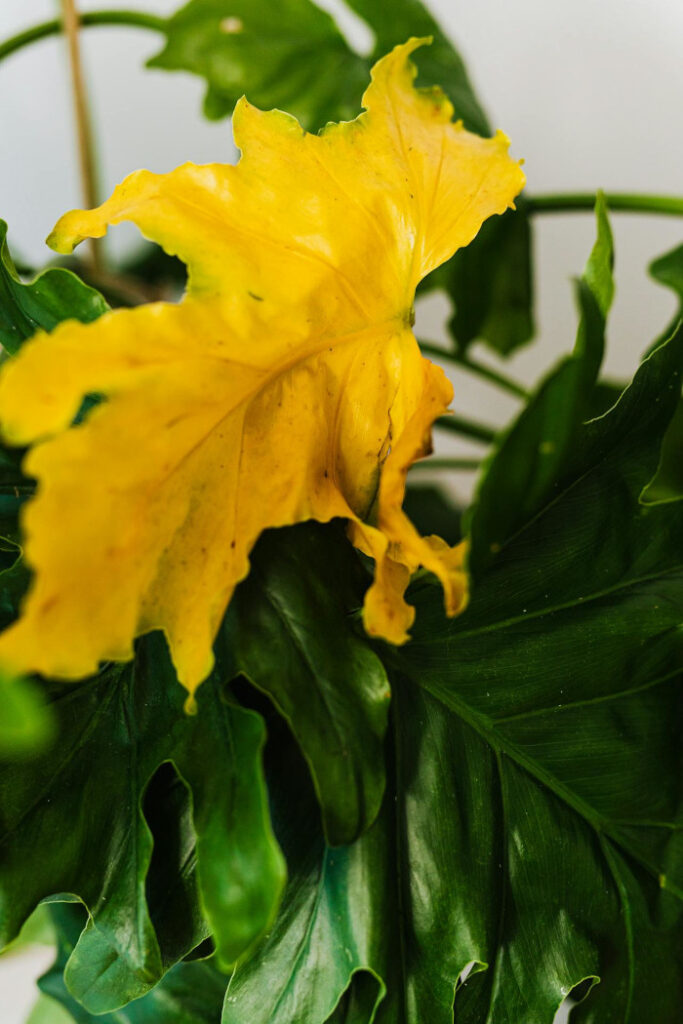
Identifying Water Issues
Watering issues are a common problem for many house plants, usually indicated by yellowing or browning leaves starting from the edges. You can work out whether the issue is overwatering or underwatering by considering the plant’s location, your watering habits, and the soil condition:
- Overwatering: More likely in dark locations or with a heavy potting mix. Brown or dead leaves may feel squishy if overwatered.
- Underwatering: If the plant is in a bright location and the soil dries out quickly, it might be underwatered. Leaves tend to go crunchy when they dry out from underwatering.
How Often to Water
Monstera plants are incredibly hardy and relatively easy to care for. Here are some general watering tips:
- Soil Moisture: Keep the soil moist but not waterlogged. Monsteras can handle waterlogged soil better than many other plants but will also tolerate drying out.
- Weekly Checks: Check the soil every week. If it seems dry, water the plant. If it feels wet, wait another week and check again.

If you have waterlogged soil then your indoor plants are susceptible to fungus gnat infestations. So it is important to closely monitor your soil conditions.
Why isn’t Monstera Growing?
This is likely an issue related to nutrients or light. Plants need light to create energy for growth and nutrients to feed that growth. A lack of either will result in smaller leaves and stunted growth.
Monsteras are a plant that like a lot of light and grow quite large so will need lots of nutrients. I recommended giving it as much light as you can get and fertilizing weekly with a liquid fertilizer of your choice.
You can also try repotting it to give it fresh nutrient filled soil and the best chance at healthy new growth.
Conclusion
Monstera Deliciosa is a hardy and rewarding plant to care for and propagate. By following this guide, you can successfully grow new plants from your Monstera and enjoy the satisfaction of seeing your plant collection grow..
Start your propagation today and share your experiences and tips for propagating Monstera in the comments below.

